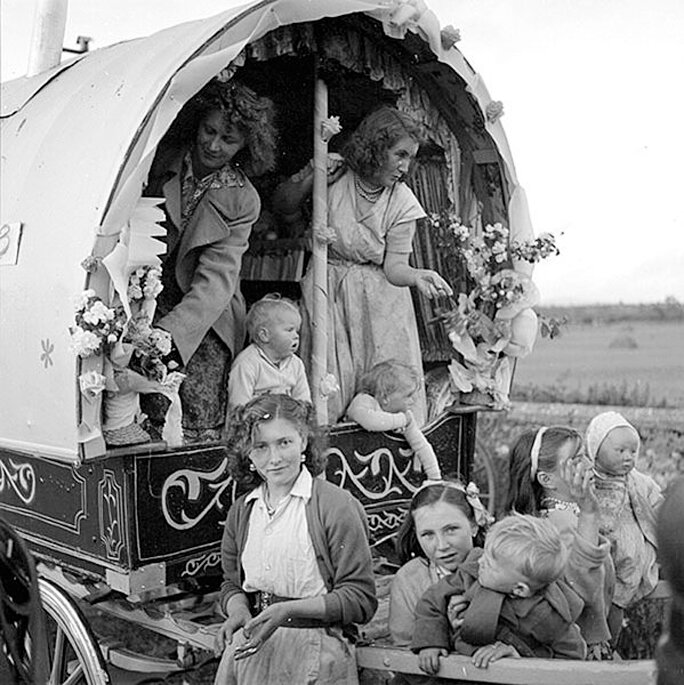
Neutaconkanut Hill, which was once a part of Johnston, served for many years as the winter quarters for a band of traveling nomads. Together, they would remain camped there on the hill until April, when they would discuss their individual summer plans and then go on their separate ways. Each fall, they would come together again on the hill.
The Nomads hailed from Roscommon, Ireland and their surnames were Riley, Burke and Mitchel; three families related by blood. William Riley, born in Nov. of 1862, was a horse trader. During the summer, he would move on to a rental house in Ohio where his wife Perstella (Broadway) was from. The couple had married in 1889 and had had seven children; Matilda, Laura, Marilla, Charlot, John, Emma and another child who died young. William died in Toledo in the autumn of 1930 and his wife followed nine years later.
John Burke was regarded as the “king” of their specific band. He was born in 1854 and married Catherine Riley, the daughter of John and Elizabeth Riley, when they were both seventeen years old. They had a son, John Joseph Burke, born in 1885.
John had come to America in 1878 and, at that time, resided in a nomad camp in Sayre, Penn. with his wife’s three brothers and their families; Michael, Edward and Patrick. John was a basket-maker by trade and lived to the age of 69. His son died in 1947.
Nothing is known of the Mitchell family other than the fact they would split up during the summer with some going to Canada and the others to Conn. The Riley family always went to Ohio and the Burkes to New York.
The nomads were regarded as wonderful neighbors. While the men worked as dog breeders, horse traders, basket-makers or boiler menders, the women walked the streets offering to tell fortunes. Referring to themselves as ‘Pavees’ or ‘Minceirs’, the nomads were able to speak English but sometimes used a language specific to travelers, a combination of English and Irish, known as ‘Shelta.’
Most of the Irish nomads here in America were Roman Catholic and not genetically related to the more well-known Romani bands who hailed from Southern Asia. Several theories exist as to what began their nomadic lifestyle. Some believe they descend from a community in Ireland where those not wealthy enough to own land had to remain mobile. Others theorize their ancestors were those made homeless due to war, famine or eviction. As self-supporting people, however they became that way, they learned the finer points of many trades and honed incredible skills in craftsmanship such as jewelry production and metal work.
It was common for female Irish nomads to marry at the age of 17 and boys at the age of 18. Of those who attended public school, about 28% dropped out prior to the age of 13. With a high mortality rate, many did not live past the age of 39. Driving fatalities, suicide, accidents and congenital issues were most often the cause of early death. Eighty percent of Irish nomads died before the age of 65, according to Ireland’s Department of Health and Children. And despite a very high birth rate, 10 percent of Irish nomad infants died before the age of two.
Referring to those not of their blood as ‘buffers’, the Irish nomads roamed and traveled, pitching their ‘home’ where the seasons carried them. Every April, before and just after the turn of the 20th century, the Rileys, Burkes and Mitchells would clear their belongings from Neutaconkanut Hill, pack up their colorfully painted wagons, kiss each other goodbye and call out wishes for good luck as each drove away toward their individual summer destinations. In the fall, they would reunite there on the hill. Between 10,000 and 40,000 people in the United States are descended from Irish nomads.
Kelly Sullivan is a Rhode Island columnist, lecturer and author.
Comments
No comments on this item Please log in to comment by clicking here